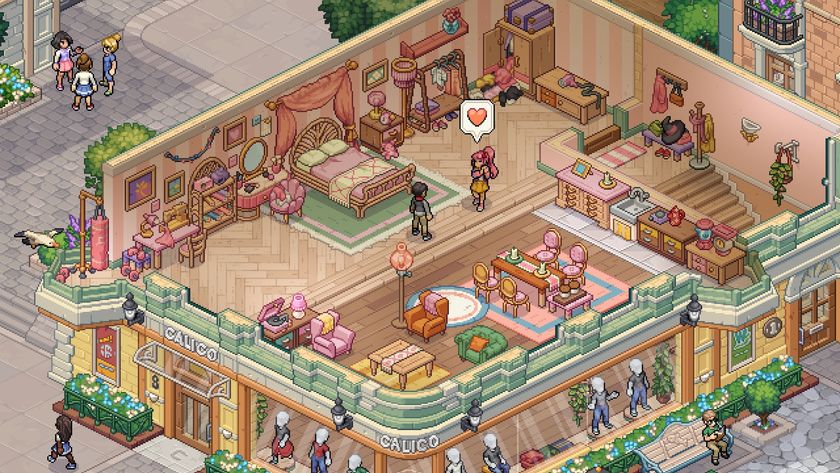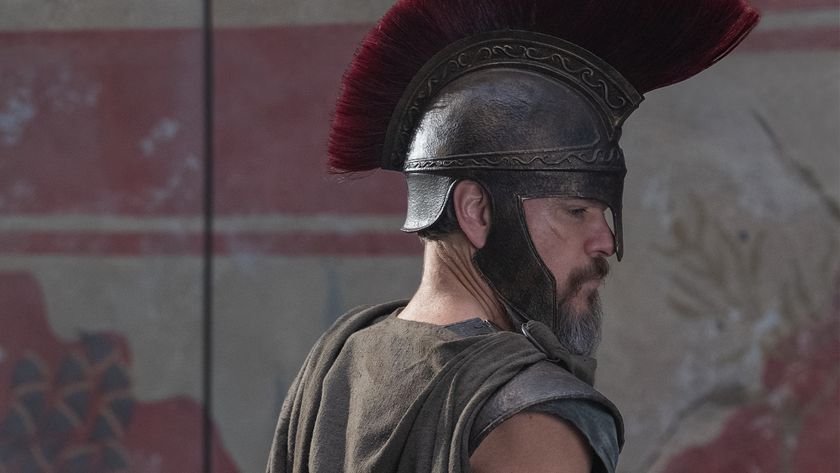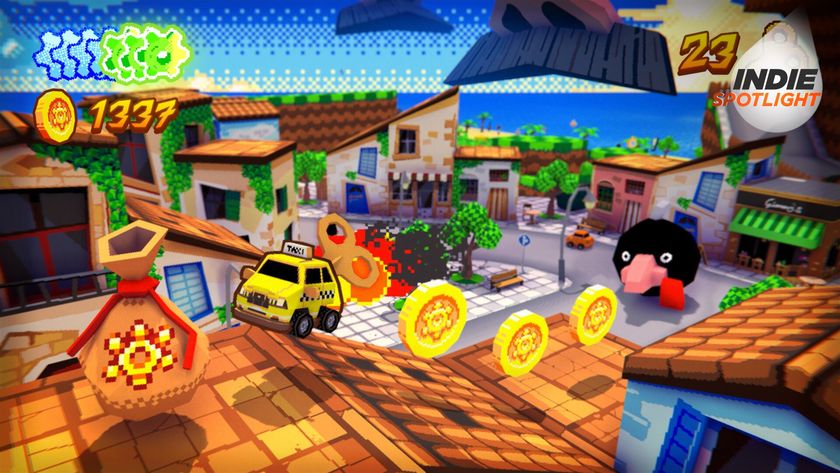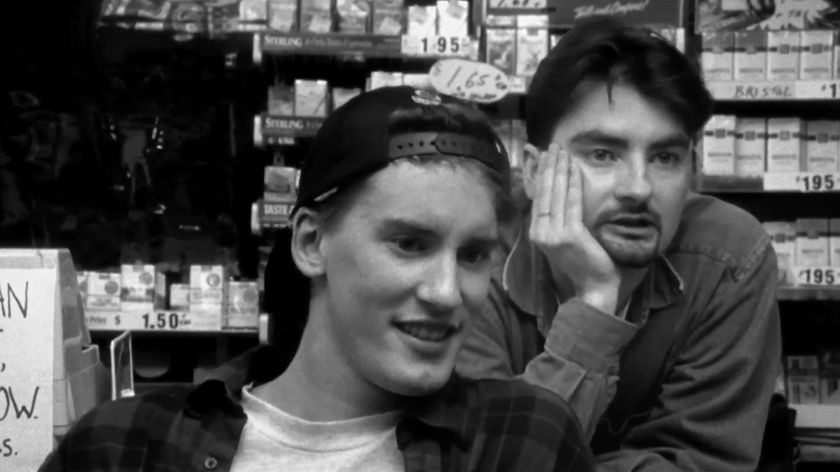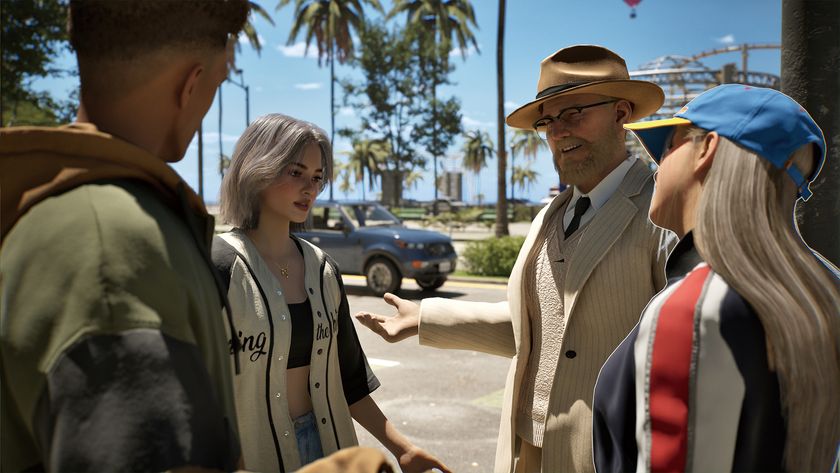It’s the unspoken star of The Legend of Zelda. A silent hero who has clashed with villainy in thousands of forms. Whose steely gaze has sought out more glowing weak spots than you could wave a Deku stick at. Who has travelled through lava, brine, time and dimensional vortexes without dulling. Who has absorbed more elfin palm sweat than can be decent. It is, of course, the Master Sword. And it… is a she. Whoa. If we’d known, we wouldn’t have spent years jamming her up monster guts. Sorry, ma’am. And in Skyward Sword, she’s about to get the respect she deserves.
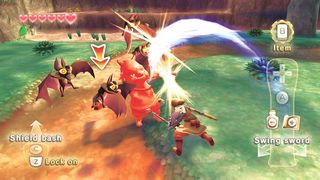
The Master Sword. The Blade of Evil’s Bane. The Sword of Time. Dr. McStabbington. Link’s iconic blade goes by many names. Legend – specifically Zelda in Twilight Princess – tells of ancient sages forging the sword. Nintendo’s own ancient sage, producer Eiji Aonuma, weaves a new yarn - revealing that the titular Skyward Sword becomes the Master Sword. A simple turn of phrase (Link’s blade inevitably ‘becomes’ the Master Sword in every Zelda) or an origin story? Either way, the weapon is protector, guide (it transforms into the cloaked lady seen in 2009’s E3 teaser art) and narrative crux.
Link’s latest game begins in the clouds, in the floating island world of Skyloft. Beneath the cloudy paving slab of peace wriggles the woodlouse of chaos: Hyrule. Down there, evil runs riot. Well, aside from the new Octorok/Deku Scrub hybrids, which sort of squat riot. Skyloftians are none the wiser. Not until an event – we’re betting Link befriends the Skyward Sword – reveals the turmoil below to our elfin star. What follows will shift between the two altitudes - an interesting twist on the dual-world mechanics of Zeldas past. Could flight feature? Promoting Spirit Tracks, Aonuma joked that airplanes were next on his vehicular hit list. And imagine Epona sporting Pegasus wings…

Whether Link makes his journey between worlds by beanstalk, cannon or Hyrulian Air, the Skyward Sword is firmly in his heroic mitts. And thanks to MotionPlus, firmly in yours too. (As long as you’re a right-on righty, that is. Aonuma confirmed there’ll be no left-handed Link.) Wii Sports Resort is the obvious model. One-to-one sword/remote mapping makes Link feel particularly puppet-like. Sway and he sways. Hold the remote up and the sword thrusts toward the heavens like a tour guide’s umbrella. It’s that same magical Resort feeling of commanding a 3D hand in a virtual space. Only where Wuhu Island’s Miis were rooted to the spot, Link roams, taking our 3D hand with him. This is a wandering 3D hand. Watch out, world.
It begins with giggles. Adult Link’s heroic frame battling with an animated hand is patently absurd. Dramatically striding forward with arm held uncontrollably aloft is a vision of silliness; with his arm out to the side Link is halfway to pretending he’s an airplane. Cutting is a more serious business. Slices stick to fixed horizontal, vertical and diagonal axes – as Miyamoto said in a recent Iwata Asks session, “Swinging freely and being fun aren’t the same thing.” Like Red Steel 2, Skyward Sword would rather master a few hits perfectly than goose its way through simulation.
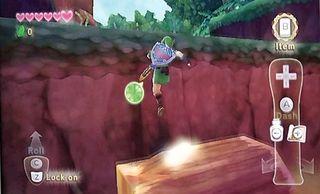
Directional slicing is intuitive and accurate: a huge relief after Miyamoto’s borked E3 display. Time for that old cliche: no one knows Nintendo hardware like Nintendo. Swipe left or right and Link mimics you with a trademark “Hai!” Strike downward and he cleaves gelatinous Zols in two. A vertical upwards slash does the same with more flourish. Attacking nearby mushrooms reveals the fidelity of onscreen movements – each cut leaves a rubbery wound as proof of angle. Likewise, chopping trees sees trunks split on the point of contact. You can even whittle down the stumps. Needless to say, we’re going to brutalize some signposts come the final game.
Zelda’s combat has long focused on timing, but MotionPlus brings precision and observation to the fore. Directional combat inspires the world. Deku Baba’s Venus flytrap-like maw now splits into quarters, hinging vertically or horizontally like an origami fortune teller. Only the right orientation of swipe will pierce the flesh inside. Lopping off Deku foreheads exposes the writhing tongue in the lower jaw – this is brutally swift stuff. Bokoblins (radically larger and dyed red) carry swords through which Link must weave his blade. Swords to the right? Attack from the left. This won’t trouble a bushido master, but even common enemy encounters require a little bit more thought than before.
Sign up to the 12DOVE Newsletter
Weekly digests, tales from the communities you love, and more
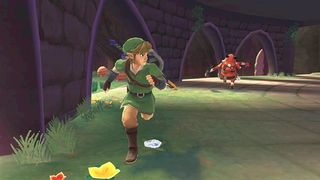
Swordplay shines in the demo’s climactic boss encounter. A tree-dwelling scorpion is classic Zelda stuff: impenetrable hide, juicy ocular weak spots nestling inside its pincers. Pincers rotate before snapping open, so swipes must be aimed. Although conceptually simple, the battle has the energy of a true swordfight. Link rolls out of pincer snaps, darts from the pile-driving tail and strikes with lethal precision. How many times have we seen the Master Sword relegated to bashing bosses already dazed by special items? How refreshing to see the blade starting what it finishes.
Post-E3, Miyamoto called Skyward Sword a “back to basics” Zelda. And yes, there is something very pure about the combat. Along with the renewed swordplay, defense and positioning are more important. A Nunchuk flick raises Link’s shield, while farther thrusts shunt it, unbalancing Bokoblins and rebounding Octorok projectiles. Old Zelda logic, revelatory control. In another twist, health potions are selected and swigged in real time (the menu overlays the action). With the game refusing to pause while you perform such actions, it forces you to seek out windows of opportunity, diving away from crashing blades to glug down a second chance.

Our lasting impression of Skyward Sword is one of capability. Link himself can do so much more. He’s fast on his toes in combat and his new-found nimbleness bleeds into exploration. He can run with the A button until a stamina meter depletes. The same meter dictates climbing time, teasing urgent adventuring from casual vine patches. Run into low walls or tree stumps and Link scampers up – a little parkour for beginners. Running lets him leap from raised areas onto rope swings, Tarzaning him to new secret areas. Zelda’s humble beginnings – Miyamoto’s childhood spent clambering around the countryside – have never seemed more relevant.
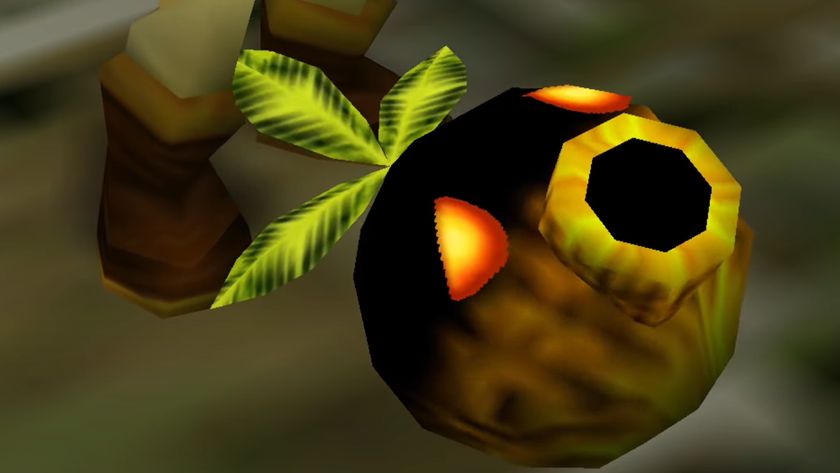
After a year of trying, Zelda: Majora's Mask streamer becomes world's first to pull off randomized no-hit run where even blocking causes a game-ending Mooncrash
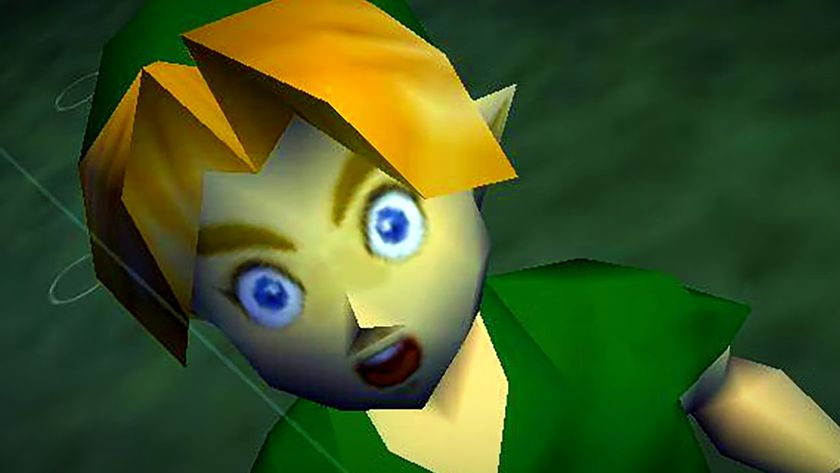
"I can't go through [with] this": The weirdest Zelda ad didn't get Nintendo's approval, but it probably happened anyway because the marketing execs were already on-site





